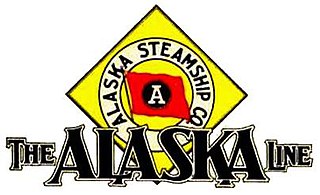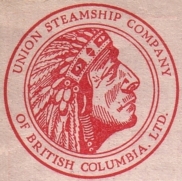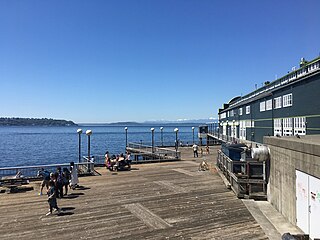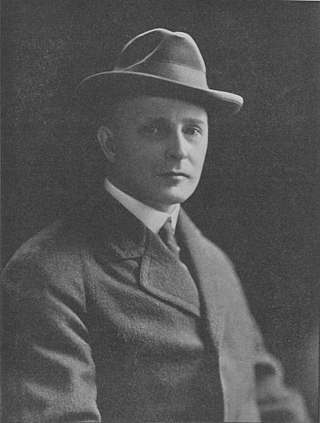
The Port of Seattle is a public agency that is owned by King County, Washington. It oversees the seaport of Seattle as well as Seattle–Tacoma International Airport. With a portfolio of properties ranging from parks and waterfront real estate, to one of the largest airports and container terminals on the West Coast, the Port of Seattle is one of the Pacific Northwest's leading economic engines.

The Port of San Francisco is a semi-independent organization that oversees the port facilities at San Francisco, California, United States. It is run by a five-member commission, appointed by the Mayor subject to confirmation by a majority of the Board of Supervisors. The Port is responsible for managing the larger waterfront area that extends from the anchorage of the Golden Gate Bridge, along the Marina district, all the way around the north and east shores of the city of San Francisco including Fisherman's Wharf and the Embarcadero, and southward to the city line just beyond Candlestick Point. In 1968, the State of California, via the California State Lands Commission for the State-operated San Francisco Port Authority, transferred its responsibilities for the Harbor of San Francisco waterfront to the City and County of San Francisco / San Francisco Harbor Commission through the Burton Act AB2649. All eligible State port authority employees had the option to become employees of the City and County of San Francisco to maintain consistent operation of the Port of San Francisco.

The Seattle-Tacoma Shipbuilding Corporation was an American corporation which built escort carriers, destroyers, cargo ships and auxiliaries for the United States Navy and merchant marine during World War II in two yards in Puget Sound, Washington. It was the largest producer of destroyers (45) on the West Coast and the largest producer of escort carriers of various classes (56) of any United States yard active during World War II.

The Alaska Steamship Company was formed on August 3, 1894. While it originally set out to ship passengers and fishing products, the Alaska Steamship Company began shipping mining equipment, dog sleds, and cattle at the outbreak of the Klondike Gold Rush of 1897. The company was purchased by the Alaska Syndicate and merged with the Northwestern Steamship Company in 1909, but retained its name, and the fleet was expanded to 18 ships. During World War II, the government took over the company's ships. When the war ended, the company struggled to compete with the new Alaska Highway for passengers and freight. It discontinued passenger service altogether in 1954 and shut down operations in 1971.

The Union Steamship Company of British Columbia was a pioneer firm on coastal British Columbia. It was founded in November 1889 by John Darling, a director of the Union Steamship Company of New Zealand, and nine local businessmen. The company began by offering local service on Burrard Inlet near Vancouver and later expanded to servicing the entire British Columbia coast.

The Central Waterfront is a neighborhood of Seattle, Washington. It is the most urbanized portion of the Elliott Bay shore. It runs from the Pioneer Square shore roughly northwest past Downtown Seattle and Belltown, ending at the Broad Street site of the Olympic Sculpture Park.

Waterfront Park is a public park on the Central Waterfront, Downtown, Seattle, Washington, USA. Designed by the Bumgardner Partnership and consultants, it was constructed on the site of the former Schwabacher Wharf. The original park closed in September 2020 after a failed inspection; the pier was completely removed by February 2021. A replacement park began construction in 2022 and is scheduled to open in 2025.

The Skinner & Eddy Corporation, commonly known as Skinner & Eddy, was a Seattle, Washington-based shipbuilding corporation that existed from 1916 to 1923. The yard is notable for completing more ships for the United States war effort during World War I than any other American shipyard, and also for breaking world production speed records for individual ship construction.

The Seattle Construction and Drydock Company was a shipbuilding company based in Seattle, Washington. Between 1911 and 1918, it produced a substantial number of ships for both commercial and military uses. In the beginning of the 20th century, until its significance was diluted by the emergence of a number of shipyards during the World War I shipbuilding boom, it was the largest of its kind in Seattle and one of the few significant ship yards along the West Coast of the United States, second only to the Union Iron Works in San Francisco.

Colman Dock, also called Pier 52, is the primary ferry terminal in Seattle, Washington, United States. The original pier is no longer in existence, but the terminal, now used by the Washington State Ferries system, is still called "Colman Dock". The terminal serves two routes to Bainbridge Island and Bremerton and has an adjacent passenger-only facility at Pier 50 for King County Water Taxi and Kitsap Fast Ferries routes.

Pier 2 in Seattle, Washington was an important shipping terminal.

The Grand Trunk Pacific dock was a shipping pier in Seattle, Washington. The original pier was built in 1910 and was destroyed in a fire in 1914. The pier was then rebuilt and continued in existence until 1964, when it was dismantled. The area where the pier stood is now part of the Seattle terminal of the Washington State Ferry system.

Pier 54 is a tourist pier in Seattle, Washington. Previously an active shipping pier and warehouse, Pier 54 was originally known as Pier 3 until it was renumbered during World War II. This pier was also known as Galbraith dock and the Galbraith Bacon dock. Because of the large number of smaller local steamships, generally built of wood, that used the pier up until the 1930s, the pier was also known as the “Mosquito Fleet dock”.

Pier 55 is a pier in Seattle, Washington. Pier 55 was originally known as Pier 4 until it was renumbered during World War Two.

Pier 57 is located in Seattle, Washington near the foot of University Street. Currently under private ownership, the pier is now a tourist attraction with gift shops and restaurants, and houses the Seattle Great Wheel.

The steamship General Frisbie was a wooden two-deck passenger ship built in 1900, named after John B. Frisbie. She was designed for use as a ferry between Vallejo and San Francisco. The steamer was successful in that role and was the fastest ship on the route when she began service. Improved roads, bridges, and automobiles reduced demand for ferry service in the Bay Area, and newer ships were optimized for transporting cars, so General Frisbie was retired in the late 1920s.

The City of Seattle was a passenger steamship built in 1890 in Philadelphia, Pennsylvania. The City of Seattle operated out of Puget Sound from 1890 to 1921, during which it ran routes between the local ports as well as Alaska, notably transporting prospectors during the Klondike Gold Rush. In 1921, the City of Seattle returned to the East Coast where it ran routes in both New York and Florida. In 1937, the City of Seattle returned to Philadelphia to be scrapped.

Senator was a steel-hulled steamship launched in 1898. She served as a troopship during the Spanish-American War and was an important part of the Nome gold rush. She spent thirty years in the coastwise shipping trade between Alaska and San Diego, until she was scrapped in Osaka, Japan in 1935.

Frank Waterhouse was an English-born, American-based businessman, a prominent figure in the shipping industry in the early 20th century. He was also president of the Seattle Chamber of Commerce and of two Seattle taxi companies. His New York Times obituary described him as having had "one of the most colorful careers in the history of the Pacific Northwest."



















